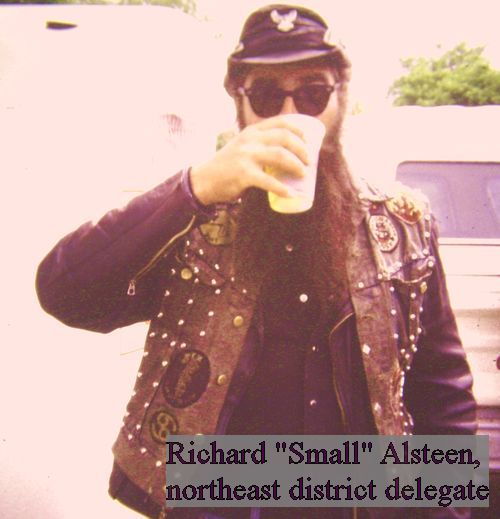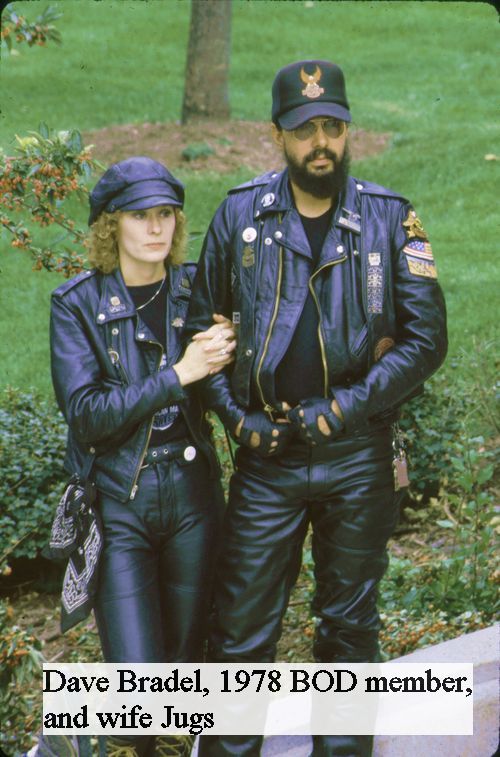The defeat of the helmet law, and the subsequent vote to override the governor’s veto of the law started a celebration that should have lasted all year. Many of us thought we would return to a normal life and just ride our motorcycles again without any mandate hanging over us. Little did we know when the rejoicing began that it was just the beginning of government interference in our daily lives. The call for a two-year study of the effects of the repeal of the helmet law put us on notice that life before the helmet law would never return.
We became aware of regulators and bureaucrats seemingly working hard to legislate motorcycles off the roads. Maybe they were always trying to do that, we just didn’t pay attention until the helmet law woke up the militant beast in us. NHTSA head, Joan Claybrook, submitted a “data package” to Congress which was attempting to reword legislation that would give the government the power to withhold highway funding again from states without a helmet law. This, coupled with threats of no-fault insurance and the EPA regulations on exhaust systems on motorcycles foretold the future we would be living in.
Our celebrations were cut short as ABATE started a campaign of revitalizing our members with renewed energy for the coming fights. Articles in our newsletter and presentations at the various region meetings were the best way to inform the membership. We didn’t have cellphones or email so we had to rely on one on one conversations and phone-tree messages.
Our letter writing campaigns were another tool, and our members took it serious, writing many letters. Our targets were President Jimmy Carter, Secretary of the Department of Energy James Schlesinger, EPA Administrator Douglas Costle, DOT Secretary Brock Adams, and of course, our nemesis, Joan Claybrook, NHTSA Administrator. Locally, we wrote to our U.S. Senators William Proxmire and Gaylord Nelson, as well as Congressmen Les Aspin, Robert Kastenmeier, Alvin Baldus, Clement Zablocki, Henry Reuss, David Obey, Toby Roth and F. James Sensenbrenner, Jr.
The first four years of ABATE’s existence had John Barajas and Tony “Pan” Sanfelipo doing most of the executive work, helped by a dozen or so members who were close to the two co-founders. As ABATE grew, along with the constant threats to our freedom, it was apparent that the organization needed to be revamped and organized into a working body. We were also penning our bylaws, statement of purpose, and rules and procedures, hoping to incorporate as soon as possible. We had approximately 1,000 members at this time, including several clubs that joined ABATE as individual members. We needed to create a state-wide network with officers to represent the various regions. The 1978 structure of ABATE of Wisconsin consisted of Mark “Leggzz” Birchback, President, Jay LeClaire, Vice President, Jim Brown, Secretary, Dave Fields, Treasurer, and Tony Pan, Business Agent.
John and Tony were no longer running the organization. A board of directors was established and they became the ruling body for ABATE. The board consisted of Bob Arndt (Sussex), Wayne “Dutch” Eigner (Milwaukee), Greg Uschan (Butler), Dave Bradel (Fond du Lac), Greg “Crunch
Puppy” Botic (Milwaukee), Brent Mulholland (Fond du Lac), Nick Campanelli (Milwaukee), John Barajas (Fond du Lac) and Ron Wheeler (North Fond du Lac). Co-Sergeant at Arms were Dennis Doherty (Milwaukee) and Mark “Brillo” Koehler (Fond du Lac).
We also broke the state up into districts, based on the Wisconsin vocational districts rather than counties. The district delegates were Dave Zien (Northern Wisc.), Mark Koehler (Fox Valley), Dennis Doherty (Southeast Wisc.), Robin Hanson (Southwest Wisc.), and Richard Alsteen (Northeast Wisc.). The newsletter was printed by inmates at the Kettle Moraine minimum security facility, under the guidance of instructor and ABATE member Reverend Ike.
As stated in our corporation papers waiting to be filed, corporate officers had a fixed term of two years by appointment of the board, and board members and regional officers had two year terms by election of the general membership.
We continued to have clashes with Richard Smith and his articles in the WBBA newsletter, and a meeting of the minds took place in Eau Claire in September at the Free Riders MC Septemberfest. It was agreed that future legislative efforts would be a joint venture consisting of members of the WBBA (Smith), Alliance of Women Bikers (Joy Finger) and ABATE (Tony Pan). Smith erroneously stated that he was appointed to represent the organizations and speak for them. We agreed he could be the front man representing our coalition of groups, but that Alliance of Women Bikers and ABATE would have members at any and all meetings, and our groups would speak for ourselves if we were in disagreement with any policies or compromises being put forward. Smith continued to stress the need for ABATE to incorporate and only recognized the National ABATE in Sacramento. We in Wisconsin were moving closer to incorporation, but we did not recognize the National ABATE in California and told Smith that. Our groups met again in Madison, July 28, 1979, and ironed out further disagreements or misunderstandings. One of the items of contention was Smith’s belief that club members were not allowed in ABATE. In fact, many club members belonged to ABATE at the time, but they were not allowed to hold executive or region officer positions. The 1970s were a time of conflict among the many clubs in Wisconsin, some of them serious. We were acting under the guidelines set down by Easyriders Magazine when ABATE first formed in 1971. We were directed to disallow club members from office in ABATE by Easyriders, because their first loyalty, as it should be, was to their club. We did not believe the hassles between the various clubs should become a burden on the many citizen bikers in ABATE. Those problems did exist in the WBBA between that organization and clubs that did not belong to WBBA.
The Wisconsin DOT was handed a defeat when the helmet law was repealed and they agreed to work with ABATE and the WBBA on ways to keep motorcyclists safe. They were also seeking a college graduate with three years or more experience in a safety related field to become the state’s motorcycle safety specialist. Unfortunately, motorcycle experience wasn’t in the list of prerequisites. Word came to us that David Rattay, 33, of Madison, accepted a six-month appointment to the Governor’s Office of Highway Safety as the motorcycle safety specialist. He had a background in communications and experience as a motorcycle salesman, mechanic and
shop manager. His duties would include working with licensing officials in developing a manual for motorcyclists and acting as a motorcycle safety consultant.
Another concern we were dealing with was the increase in Moped owners. Since October 1, 1978, 7,660 Mopeds were registered in Wisconsin, but according to the DMV, accident reports indicated that Wisconsin had as many if not more unregistered Mopeds. In 105 Moped accidents reported through September, only 45 were registered, and their statistics were being added to the motorcycle accident statistics. We took action to get those numbers removed from our statistics because it misrepresented motorcycle crash numbers.
In 1979, Wisconsin finally found a way to use the funds generated by the motorcycle registration fees. The DNR would assist local units of government in buying, developing, and operating public off-road motorcycle facilities. As of that announcement, six counties started along that path. Dane, Dodge, Fond du Lac, Marathon, Racine and Rock counties were participating in the planning of this program. We were cautiously optimistic that young riders would have a place to learn and enjoy the thrills of riding a motorcycle.
There is a delay in getting up to date accident figures, but we were able to access the 1977 statistics, thanks to the WBBA. We had many arguments with the office of highway safety about overhauling the existing testing procedures for motorcyclists, and their stubborn refusal to establish and educational program for new riders. The 1977 figures were revealing:
Average age…22
Total deaths…68
No helmet worn…13
No helmet/head injury…9
Helmet worn…45
Helmet worn/head injury…25
BAC over. 10… 28 (44%)
Out of 68 deaths, 10 were riding Harleys, their average age, 28.
It was nearing the end of 1979, and we were eager to present the first-ever ABATE state-wide meeting, January 20, 1980, at the Fond du Lac County Fairgrounds. We were going to set our agenda for the coming years, pick our battles, plan our custom bike shows and prison shows, and revise our thoughts on how to proceed after our corporation papers are finally complete and we become incorporated for the first time.

OLYMPUS DIGITAL CAMERA 
OLYMPUS DIGITAL CAMERA 
OLYMPUS DIGITAL CAMERA 


OLYMPUS DIGITAL CAMERA
